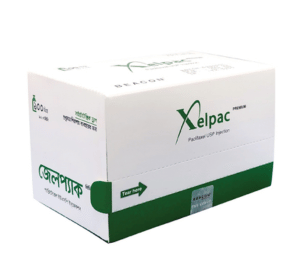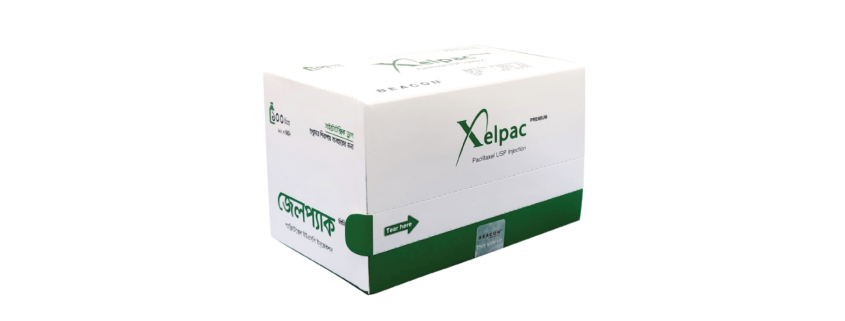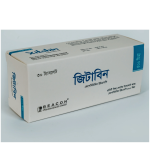Xelpac Premium

Generic Name :Paclitaxel
Indications
Ovarian Carcinoma: Xelpac is indicated as first line and subsequent therapy for the treatment of advanced carcinoma of the ovary. As first line therapy, Xelpac is indicated in combination with cisplatin.
Breast Carcinoma: Xelpac is indicated for the adjuvant treatment of node-positive breast cancer administered sequentially to standard doxorubicin-containing combination chemotherapy. Xelpac is indicated for the treatment of breast cancer after failure of combination chemotherapy for metastatic disease or relapse within 6 months of adjuvant chemotherapy. Prior therapy should have included an anthracline unless clinically contraindicated. Xelpac is indicated for the first-line therapy of advanced or metastatic breast cancer either in combination with an anthracycline in patients for whom anthracline therapy is suitable or in combination with trastuzumab in patients who overexpress HER2 at a 2+ or 3+ level as determined by immuno-histochemistry.
Gemcitabine, in combination of Xelpac, is indicated in the treatment of patients with unresectable, locally recurrent or metastatic breast cancer who have relapsed following adjuvant/neoadjuvant chemotherapy. Prior chemotherapy should have included an anthracycline unless clinically contraindicated.
Xelpac is indicated for the treatment of metastatic cancer of the breast, in combination with trastuzumab, in patients who have tumors that over-express HER2 and who have not received previous chemotherapy for their metastatic disease.
Non-Small Cell Lung Carcinoma: Xelpac, in combination with cisplatin, is indicated for the first line treatment of non-small cell lung cancerin patients who are not candidates for potential curative surgery and/or radiation therapy.
Kaposi’s Sarcoma: Xelpac is indicated for the second line treatment of AIDS related Kaposi’s Sarcoma.
Gastric Carcinoma: Xelpac is indicated for the treatment of Gastric Carcinoma.
Pharmacology
Paclitaxel is a novel anti-microtubule agent that promotes the assembly of microtubules from tubulin dimers and stabilizes microtubules by preventing depolymerization. This stability results in the inhibition of the normal dynamic reorganization of the microtubule network that is essential for vital interphase and mitotic cellular functions. In addition, paclitaxel induces abnormal arrays or “bundles” of microtubules throughout the cell cycle and multiple asters of microtubules during mitosis. Following intravenous administration of Paclitaxel, paclitaxel plasma concentrations declined in a biphasic manner. The initial rapid decline represents distribution to the peripheral compartment and elimination of the drug. The later phase is due, in part, to a relatively slow efflux of paclitaxel from the peripheral compartment.
Dosage & Administration
All patients should be premedicated prior to Paclitaxel administration in order to prevent severe hypersensitivity reactions. Such premedication may consist of dexamethasone 20 mg PO administered approximately 12 and 6 hours before Paclitaxel, diphenhydramine (or its equivalent) 50 mg IV 30 to 60 minutes prior to Paclitaxel, and cimetidine (300 mg) or ranitidine (50 mg) IV 30 to 60 minutes before Paclitaxel.
First-line treatment of ovarian cancer: Although alternative medication regimens for paclitaxel are under investigation at present, a combination therapy of paclitaxel and cisplatin is recommended. Depending on the duration of infusion, two different dosages are recommended for paclitaxel treatment: 175 mg/m2 of paclitaxel is administered as an intravenous infusion over a period of three hours followed thereafter by 75 mg/m2 of cisplatin and the therapy is repeated at 3-week intervals, or 135 mg/m2 of paclitaxel is administered as an intravenous infusion over a period of 24 hours followed thereafter by 75 mg/m2 of cisplatin and the therapy is repeated at 3-week intervals.
Second-line treatment of ovarian cancer: The recommended dose of paclitaxel is 175 mg/m2 administered over 3 hours, with a 3-week interval between courses.
Adjuvant chemotherapy in breast carcinoma: The recommended dose of paclitaxel is 175 mg/m2 administered over a period of 3 hours every 3 weeks for four courses, following AC therapy.
First-line chemotherapy of breast carcinoma: When used in combination with doxorubicin (50 mg/m2), paclitaxel should be administered 24 hours after doxorubicin. The recommended dose of paclitaxel is 220 mg/m2 administered intravenously over a period of 3 hours, with a 3-week interval between courses. When used in combination with trastuzumab, the recommended dose of paclitaxel is 175 mg/m2 administered intravenously over a period of 3 hours, with a 3-week interval between courses. Paclitaxel infusion may be started the day following the first dose of trastuzumab or immediately after the subsequent doses of trastuzumab if the preceding dose of trastuzumab was well tolerated.
Second-line chemotherapy of breast carcinoma: The recommended dose of paclitaxel is 175 mg/m2 administered over a period of 3 hours, with a 3-week interval between courses.
Advanced non-small-cell lung cancer: The recommended dose of paclitaxel is 175 mg/m2 administered over 3 hours followed by 80 mg/m2 of cisplatin, with a 3-week interval between courses.
Treatment of AIDS-related KS: The recommended dose of paclitaxel is 100 mg/m2 administered as a 3-hour intravenous infusion every two weeks.
Dose adjustment: Subsequent doses of paclitaxel should be administered according to individual patient tolerance. Paclitaxel should not be re-administered until the neutrophil count is >1.5 x 109/1 (>1 x 109/1 for KS patients) and the platelet count is >100 x 109/1 (>75 x 109/1 for KS patients).



